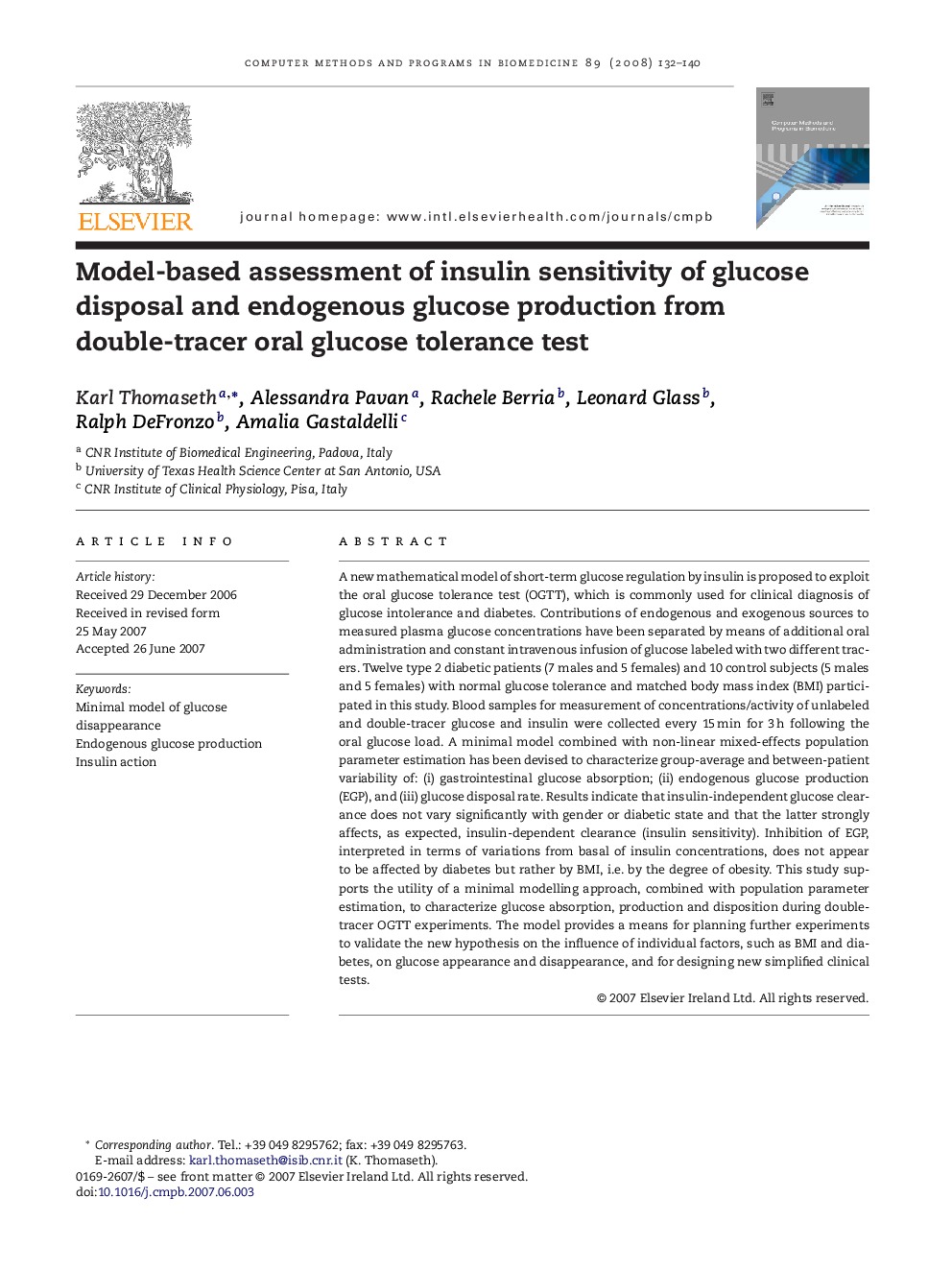| Article ID | Journal | Published Year | Pages | File Type |
|---|---|---|---|---|
| 468212 | Computer Methods and Programs in Biomedicine | 2008 | 9 Pages |
A new mathematical model of short-term glucose regulation by insulin is proposed to exploit the oral glucose tolerance test (OGTT), which is commonly used for clinical diagnosis of glucose intolerance and diabetes. Contributions of endogenous and exogenous sources to measured plasma glucose concentrations have been separated by means of additional oral administration and constant intravenous infusion of glucose labeled with two different tracers. Twelve type 2 diabetic patients (7 males and 5 females) and 10 control subjects (5 males and 5 females) with normal glucose tolerance and matched body mass index (BMI) participated in this study. Blood samples for measurement of concentrations/activity of unlabeled and double-tracer glucose and insulin were collected every 15 min for 3 h following the oral glucose load. A minimal model combined with non-linear mixed-effects population parameter estimation has been devised to characterize group-average and between-patient variability of: (i) gastrointestinal glucose absorption; (ii) endogenous glucose production (EGP), and (iii) glucose disposal rate. Results indicate that insulin-independent glucose clearance does not vary significantly with gender or diabetic state and that the latter strongly affects, as expected, insulin-dependent clearance (insulin sensitivity). Inhibition of EGP, interpreted in terms of variations from basal of insulin concentrations, does not appear to be affected by diabetes but rather by BMI, i.e. by the degree of obesity. This study supports the utility of a minimal modelling approach, combined with population parameter estimation, to characterize glucose absorption, production and disposition during double-tracer OGTT experiments. The model provides a means for planning further experiments to validate the new hypothesis on the influence of individual factors, such as BMI and diabetes, on glucose appearance and disappearance, and for designing new simplified clinical tests.
